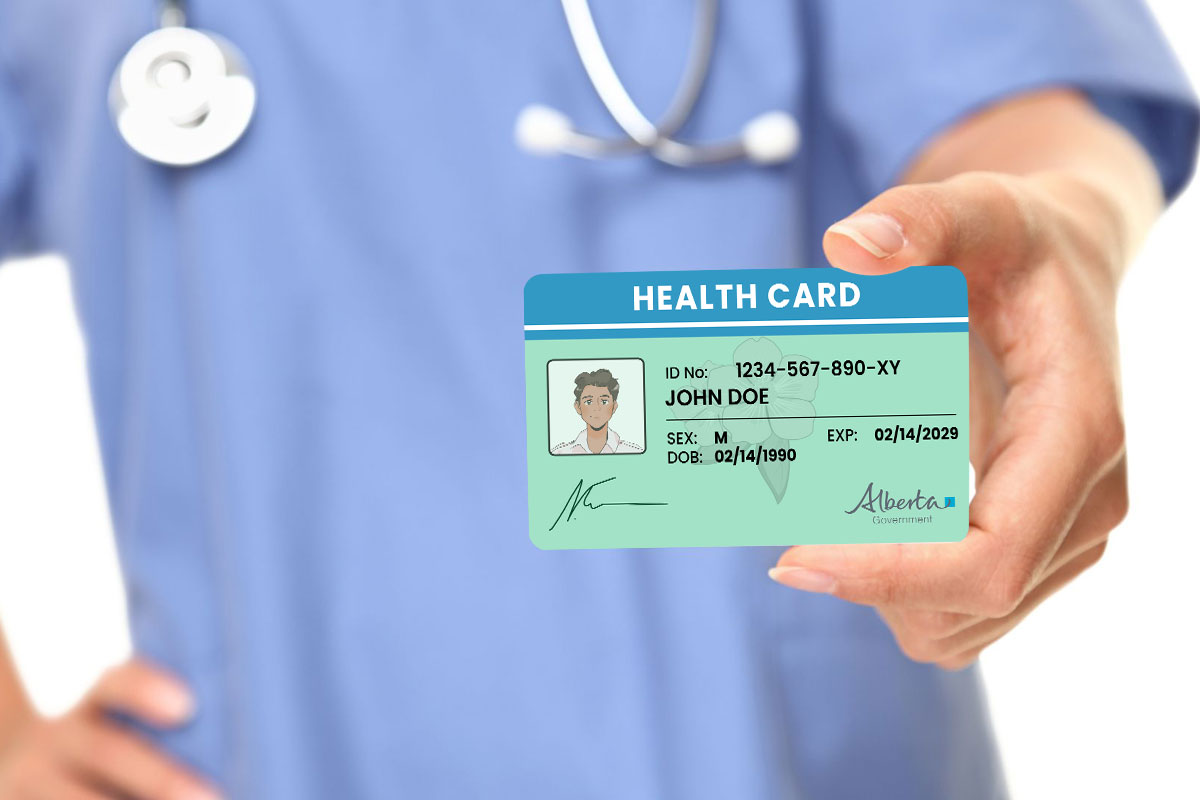Last Updated on April 23, 2025


If you’re new to Alberta or just sorting out your paperwork, one of the first things you’ll want to check off your list is your Alberta Health Care Insurance Plan (AHCIP) registration. This handy little card is your golden ticket to publicly funded healthcare in the province—and trust us, you don’t want to go without it.
Whether you’ve just moved from another province, landed here as a newcomer from abroad, or finally decided to sort out your health coverage, this guide will walk you through everything you need to know about applying for your AHCIP card. We’ll cover eligibility, documents, application steps, and what to expect after you apply—all in plain, no-fuss Canadian English. Let’s dive in.
What Is AHCIP?
First off, let’s clear the air—AHCIP stands for Alberta Health Care Insurance Plan. It’s the provincial health insurance plan that covers most Albertans for medically necessary healthcare services. We’re talking visits to your family doctor, emergency care, surgeries, hospital stays, and diagnostic tests like X-rays and bloodwork.
And like every province, Alberta has its own way of handling health insurance. So even if you’ve had a health card in Ontario, B.C., or Quebec, it’s not the same thing once you move here. You’ll need to apply for Alberta coverage separately.
What’s On the AHCIP Card?
The Alberta health care card is a simple paper card—no photo, no microchip, just your name and personal health number (also known as your Alberta Health Number). Every person in your household gets their own card, including kids and newborns.
Here’s what it includes:
- Full Name
- Personal Health Number (PHN)
- Effective Date of Coverage
Important Tip
- For parents, once your baby is born, make sure to register them as soon as possible. You’ll need to submit the birth registration and apply for their AHCIP coverage separately—your baby won’t be automatically added to your plan.
Who Is Eligible for AHCIP?
Great question—because not everyone automatically qualifies. Here’s the breakdown of who can apply:
You are eligible if you:
- Live in Alberta permanently.
- Are physically present in Alberta for at least 183 days per year (that’s over half the year).
- Are legally entitled to be in Canada (citizens, permanent residents, and certain temporary residents like workers and students).
You are not eligible if you:
- Are a tourist or visitor in Alberta.
- Live in Alberta less than 183 days/year (without a valid reason).
- Hold a diplomatic status.
That being said, temporary foreign workers, international students, and Ukrainian evacuees with valid permits may qualify—provided they’re living here long enough and can show proof of residency and legal status. You may need to jump through a couple of extra hoops, but it’s definitely doable.
What Does AHCIP Cover?
Let’s be real—healthcare isn’t free, but it sure feels close when you’ve got a provincial plan like AHCIP backing you up. Here’s what’s included:
Covered by AHCIP:
- Doctor’s appointments
- Emergency room visits
- Hospital stays
- Diagnostic services (like blood tests, MRIs, and X-rays)
- Some oral surgeries
- Psychiatric hospital services
Not Covered (you’ll need private insurance or out-of-pocket):
- Prescription drugs (unless you’re under 25 and covered by your parents’ plan, or you’re a senior on a benefits plan)
- Dental cleanings and checkups
- Eye exams for adults aged 19 to 64
- Ambulance rides
- Cosmetic surgery
For these extras, many Albertans opt for additional private insurance or benefits through an employer.

Step-by-Step: Alberta Health Card Application
Step 1: Download or Pick Up the Application Form
You can download the AHCIP application form online from the Alberta.ca website, or pick one up in person at a registry agent’s office. If you’re more of a pen-and-paper person, the in-person option is nice—you can even fill it out on the spot.
Step 2: Gather Your Required Documents
Here’s where most people get stuck—but we’ve got you. You’ll need original documents (no scans or copies, unless you’re applying by mail). You must show:
- Proof of Identity (1 document)
- Valid passport
- Canadian birth certificate
- Canadian citizenship card
- Proof of Legal Entitlement to Be in Canada (1 document)
- Permanent resident card
- Work permit (must be valid for 12+ months)
- Study permit (again, must be valid for 12+ months)
- Proof of Alberta Residency (1 document)
- Alberta driver’s license
- Utility bill (gas, electricity, internet) showing your name and Alberta address
- Lease or rental agreement
Important Tip
- Photocopy your documents clearly and ensure all information is accurate.
- If you’re submitting online, scan documents in PDF format for easy uploading.
- If your documents are in another language, you may need a certified translation.
Step 3: Submit Your Application
Now comes the fun part—submission! You can do this in person or by mail.
Option 1: In Person
Head to a participating registry agent (think AMA or your local registry office). They’ll process your paperwork on the spot and hand your documents right back to you. It’s quick and efficient.
Option 2: By Mail
If you live in a rural area or just prefer to avoid lineups, you can mail your completed application and photocopies (not originals) of your documents to:
Alberta Health
Attention: AHCIP
PO Box 1360, Station Main
Edmonton, AB T5J 2N3
When Will My Coverage Start?
This depends on a few things:
- If you’re moving from another province: Coverage usually starts on the first day of the third month after you arrive. For example, if you moved to Alberta on June 10, your coverage would likely start September 1.
- If you’re moving from outside Canada: You’ll be covered from your date of arrival, as long as you apply within 3 months.
If you’re waiting for your AHCIP card to arrive and need to see a doctor, hang on to any receipts—you may be able to get reimbursed once your coverage kicks in.
How Long Does It Take to Get the Card?
Once your application is processed:
- In-person applications usually take up to 5 business days.
- Mailed applications can take up to 6 weeks.
Your AHCIP card will be mailed to the address you provided. It’s a simple paper card (not plastic), but it does the job. You can laminate it if you want to keep it from getting dog-eared in your wallet.
What If My Situation Changes?
Life happens—and when it does, don’t forget to keep your AHCIP info up to date. You should notify Alberta Health if you:
- Move to a new address
- Get married or divorced
- Have a baby
- Leave Alberta for more than 183 days
- Change your legal name
You can update your details through a registry agent or by submitting the correct form online or by mail.
What If I’m Just Visiting Alberta?
If you’re from another province and visiting Alberta temporarily, you don’t need to apply for AHCIP. Your home province’s health card will be accepted, thanks to the interprovincial agreements. But make sure your coverage is active, and consider travel insurance for extras like ambulances or prescription drugs.If you’re a newcomer to Canada visiting Alberta, you may not be eligible for AHCIP right away—check your immigration documents and length of stay to determine your status.
What If I Move to Alberta from Another Province?
If you’re coming from Ontario, B.C., Manitoba, or anywhere else in Canada—good news. There’s no lapse in your health coverage, as long as you apply on time.
Here’s how it works:
- You stay covered by your home province’s plan for your first 3 months in Alberta.
- Your AHCIP coverage will kick in on the first day of the third month after your arrival.
Example: If you moved from Saskatchewan to Calgary on July 15, you’d be covered by Saskatchewan Health until October 1. That’s when AHCIP takes over.
Just don’t forget to cancel your health card in your former province once AHCIP is active. Having multiple provincial health plans active at once can get you into hot water—provincial governments don’t like double-dipping.
What If I’m an International Student?
International students are eligible for AHCIP if:
- Your study permit is valid for 12 months or more.
- You’re physically living in Alberta for the majority of your studies.
If your permit is shorter than 12 months, unfortunately, you won’t qualify for AHCIP. In that case, your school may offer a private insurance option (like Guard.Me or Blue Cross). Some schools even bundle it into your tuition, so double-check before paying for private insurance on your own.
Pro tip: If you renew your permit and your total time in Alberta exceeds 12 months, re-apply for AHCIP with your updated documents.
What If I’m a Temporary Foreign Worker?
As a temporary foreign worker, you may qualify for AHCIP if your work permit:
- Is valid for 12 months or more, and
- Lists Alberta as your primary location of work.
If your permit is shorter or you’re moving around frequently, you might not meet eligibility requirements. However, many workers under the Temporary Foreign Worker Program (TFWP) are eligible—especially those with long-term placements or LMIA-supported jobs.
Employer tip: If you’re hiring foreign workers, make sure they’re informed about health coverage requirements and help them gather necessary documentation. Some employers even walk their workers through the application process.
What About Ukrainian Evacuees and Refugees?
Alberta has extended health coverage to Ukrainian evacuees under Canada’s special immigration measures. If you or someone you know has arrived in Alberta under the CUAET (Canada-Ukraine Authorization for Emergency Travel), you may qualify for AHCIP even before you’ve received permanent status.
You’ll need:
- Your CUAET permit
- Proof of Alberta address
- Valid ID (passport, etc.)
Refugees and protected persons may also qualify under certain conditions. Contact Alberta Health or a local immigrant support organization for the latest updates.

More FAQs About Alberta AHCIP
Here are answers to some of the most common queries about AHCIP:
Conclusion: Your Health Card, Your Health Security
Applying for AHCIP might seem like a small chore, but it’s one of the most important steps in getting settled in Alberta. It ensures you and your family are protected in case of medical emergencies, and gives you access to regular healthcare without a huge bill at the end.
Whether you’re a Canadian moving provinces or a new resident to the country, take the time to gather your documents, submit your application, and get that card in your wallet. Trust us—when you’re sick or need to see a doctor, you’ll be glad you did.
Additional Resources and Support
- Visit Alberta AHCIP webpage for official details.






